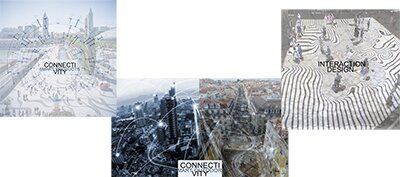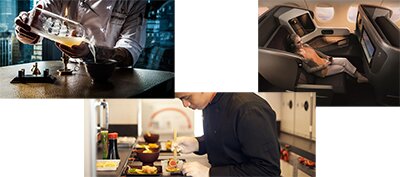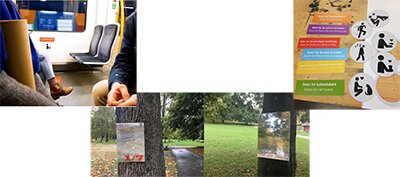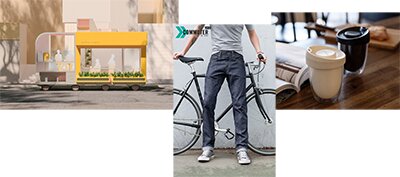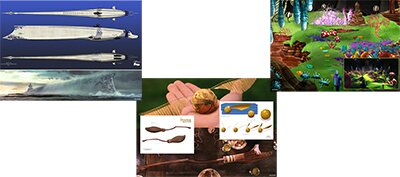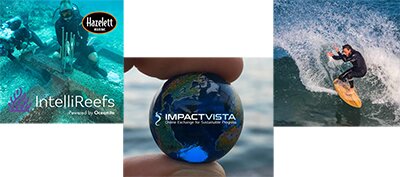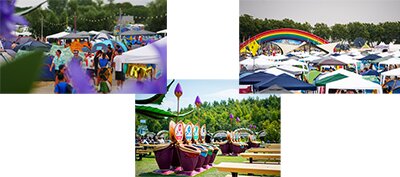#1 Sketching techniques for creativity
by JanWillem Hoftijzer
When designing objects or clothes or buildings or systems, all steps and stages of the process require visual communication; design ideas and concepts can only be discussed, assessed, liked or disliked in case they have been depicted in sketches or drawings.
From a designer’s perspective, sketching functions as a language for the designer: sketching helps you to visually suggest ideas and solutions that are not there yet: the liminal space between what was and what will be. It enables you to communicate with everybody involved: partners, users, managers, clients.
With that in mind, this series of workshop sessions offers a variety of professional sketching techniques, materials and tools. These techniques will stimulate your creativity, and help you to apply clarity, composition and ‘chairoscuro’ to your design sketches.
The series of workshop sessions is built around a challenging trajectory of design exploration, explanation. Each stage of the process to run will be executed using specific and suitable visualization techniques.
#2 Designing Smart Products for Smart Outdoors
by Hande Ayanoglu
The world is going digital and the digital world is becoming smarter and more complicated. Interaction design helps how users would interact with digital technology and it focuses on creating engaging smart products with well thought out behaviors.
Our spaces are also becoming smart due to technology of which are mostly indoors (e.g., smart houses). However, turning outdoors (i.e., public spaces) to become smarter is more of a challenge due to the number of users.
Designing Smart Outdoors is a possible application scenario of Internet of Things (IoT) which is a leading path to a smart world with ubiquitous computing and networking. Thus, IoT is capable to provide all the information and characteristics necessary for a smart outdoor ecosystem and thereby smart products.
A liminal space is the time between the ‘what was’ and the ‘next’ and in order to create smart outdoors, it is essential to understand what is the current situation, which products are included in the environment and which products can be included in order to design the ‘next’.
The workshop aims to provide skills concerning the ideation part of interaction design, which are at the basis of designing interactive solutions, particularly those of smart products, characterized from the point of view of user centered design and user experience. The workshop’s main objective is to generate solutions for a smart outdoor ecosystem with smart products by understanding the needs and requirements of users.
#3 Airplane meal service design thinking project
by Filip Fransen (deSter)
How may we create a new type of Business Class meal service that offers choice, improves quality of the meal and creates a convenient experience by using technology and questioning today’s status quo.
Through rapid technological and digital advancements, the world and how we live is changing tremendously. This is also reflected in how we eat, drink and travel. Passengers want convenience, quality at our fingertips, anytime during the day. This is no difference when it comes to experiencing food on a plane. Therefore, many airlines look to bring a new food experience that is in line with the way passengers travel nowadays. In business class people don’t necessarily expect a classic fine dining dinner experience. Perhaps they look for a great meal before flying, or they just want to be surprised, maybe they want to ensure they know what they eat for dietary reasons. Technology is allowing us to rigorously change the way food conventionally is served on board.
Besides technology, food is a basic real need for human beings, that has an increasing value on our life quality as it is emotional, and tangible compared to the large part of our life that has become digitalized.
In this 5 day workshop, after a brief introduction into the airline world, we will use design thinking techniques to come up with a new service philosophy to bring a food experience to a Business Class passenger. We will guide you through a step by step creative process, that will unlock your creativity and narrow down ideas into a valuable new concept. The result will not be technical drawings, yet a visualization of a conceptual service concept.
#4 Transitional scenarios: meetings in liminal space
by Margaret Rynning and Sofie Platou
In a multi-facetted society, where different cultures often do not meet, yet inhabit the same places, liminal spaces hold possibilities of interactions. The in-between moments can have unpretentious opportunities where it feels safe to participate for different kinds of people. Effortless, volatile interactions may create understanding and curb prejudice to social or political differences, and possibly be small steps on the way that leads to changes in how we as people see each other.
This workshop holds the narrative of the momentary interactions, the accidental meeting between people in public spaces. The workshop investigates scenarios and how design-interferences in public spaces may encourage people to interact with others they would not normally contact. We explore the potentials and the obstacles of the liminal conditions and invite external arbitrary partakers to join in low-threshold on-site interventions, facilitated through design. Throughout the workshop week we will brainstorm, design, prototype, test the designs in the chosen spaces and correct the designs according to experiences in the test. The students work in groups and help guiding each other’s projects.
#5 Exploring better ways to carry
by Jensen Pauwels
Almost everyone in today's world owns one or more bags, wallets, cases, luggage or utility bags. We use them to carry our belongings while working, travelling, commuting, hiking, going to the gym and more. They need to suit their main task really well, have a little dose of versatility and have the right balance of style and personality.
In this workshop we will research and identify a carry situation where you see a need of improvement. Using hand and/or digital sketching you will visualize ideas and explore different design concepts where in the end the goal is to create a physical prototype and present this together with your sketches as it is done in a professional studio.
Suggested design themes:
- A bag for the digital Nomad
- The next generation wallet
- Camera/camera phone carry solution
- The perfect lightweight carry-on travel bag
- Choose your own
#6 Spatial Liminality: Find 'home' on the go
by Annelies Claeskens (P&G)
Research indicates we are commuting more than ever before, we move around more and speed of life has increased drastically. Yet we all want to retire to our safe bubble at the end of a busy day. What that bubble looks like is different for everyone. We share more spaces and thus we need to create the feeling of home in them. It can be your dorm room, your car, the train or the toilet :-). Take the example of putting on your headphones on the metro to create that personal bubble. The space you occupy during that moment is yours. How can FMCG (fast moving consumer good) companies help you make these spaces into clean, healthy and safe bubbles of comfort?
What we’d love to do:
Take FMCG product and turn it into an opportunity for these limbo spaces! How can companies that make FMC product/services help to create that safe bubble? Where do we have an opportunity to own these spaces?
We want you to bring to life aspirational stories of commuters, roommates & travelers using these products in different ways, designed to optimally fit their purpose. We challenge you to ignore the obvious and look for things that can make that every day liminality disappear.
Output after the workshop
We’d love you to envision a ‘concept car’ for FMCG. The output can be up to the team, from posters to prototypes over video to soundscapes, just lay off the powerpoint! (And no, also no Keynote)
Idea first, execution later. We’ll up the stakes for you, qualified teams will get the opportunity to share with P&G leadership their great concepts!
Pictures:
Examples of products that bring home on the go.
- Levi’s commuter jeans: A regular pair of your favorite jeans, designed for commuting.
- Uppercup: The Uppercup is a sustainable designed, reusable takeaway coffee cup that is elegant and durable and helps you keep the way you drink coffee @ home, on the go.
#7 Design & visualizing imagination to (virtual) reality for the entertainment industry
by Gert Stevens
Exploring the 'Liminality' of Imagination in a transitional workspace.
Procedures, techniques, tips and tricks to conceptualize and visualize the transition of story scripts or game bibles to film, TV series, commercials, games and AR/VR projects.
From sets to vehicles, machines and hand props and with an emphasis on Product Design the workshop introduces how design matters in the ever-rapid evolving world of entertainment design.
This workshop is a practical exercise to translate a sci-fi, contemporary or alternative reality story script into an industry worthy presentation.
During this exciting week we'll tackle among other following topics:
- history and future of design in the entertainment industry and the influence on society
- the core basis of an entertainment project
- project analyses, breakdown, reference, copyright check and cross platform options before the design starts
- brain abusive conceptual out of the box thinking techniques
- awesome analog/digital art and design techniques with the latest VR tools
- using the right tools for the right tasks
- juicing a presentation to the wow factor
This workshop is intense but fun where we work towards a deadline in teamwork, as for the end result we aim for a coherent designed universe useable in the entertainment industry.
Some basis of analog/digital sketching, modeling and 3D printing skills for ideation and visualization are recommended.
#8 A Tinder for Sustainable Innovation
by Ief Winckelmans, supported by Els Du Bois
IMPACTVISTA.COM is a platform that facilitates the transition to a sustainable society. With a global community of young explorers, supported by renowned explorers and leading scientists we report on the challenges caused by the negative impact of how we currently live and work. At the same time, we are building a global alliance of responsible professionals, investors, corporations and non-profit organisations to address the challenges. Supported by a technological platform, we act as a matchmaker to connect our allies to the expertise, resources and capital they need to find and develop the solutions that will enable humankind to create a sustainable society for generations to come. Our question: "How can we make the best use of our network and maximize our positive impact?"
Successful examples:
- Sustainable Surfbrand SNAPPERX: Responsible natural grown and harvested Balsa Surfboards and apparel.
- Nano-tech materials company and coral-reef saver INTELLIREEFS: Bio-friendly Concrete and its application to support coral growth.
- Maritime tech start-up WavePilot: Wave-reading technology on ships to save fuel by optimising course and speed with the help of real-time wave data.
Within this International Design Workshop week, the questions we want to tackle with you: how can this matchmaking be extended towards student involvement? What are the advantages for all stakeholders to extend our platform to these young potentials? And what would this imply for the platform (=> redesign)?
#9 Love Tomorrow & Tomorrowland
by Lori Maes, supported by Anouk Winant and Thomas Roscam
Love Tomorrow & Tomorrowland embrace a positive and loving relationship with Mother Nature that contributes to the well-being of the next generations. Love Tomorrow, a sustainable platform grown out of Tomorrowland, turns these promises into reality. Responsibility, Nature, Innovation, Health and Respect are the five circles of Love Tomorrow. The Heart is the inner circle, representing passion, love and respect.
Every year at the Tomorrowland festival, a huge amount of waste is produced. This waste mostly consists out of consumption waste, but also camping equipment, clothes, wood,... Love Tomorrow would love to reduce and recycle this waste as much as possible. They want to challenge you to make the festival a sustainable experience with them. This workshop will consist of two design challenges.
- A lot of activities on the festival and camping site already encourage the People of Tomorrow to recycle their consumption waste. The Recycle Club with a Recycle Clubhouse and a Recycle Team who encourage the visitors to recycle by offering Recycle Kits and information, are prime examples.
Love Tomorrow also created new, easy and international recycle symbols to make recycling easy. None of these activities however are present in the surrounding routes to the festival or camping site. So the challenge of this workshop is: How can we apply the Love Tomorrow activities, recycling in particular, to the surrounding routes. - Despite the many initiatives at Dreamville and other festival campgrounds, the huge amount of waste at the end of the festival weekend remains a problem. Camping equipment that is often still in perfect condition but simply left behind. This means that not only the products are lost, but also the raw materials from which they are made.
By extending the experience and mystical world from the festival to the campsite, we will together with Love Tomorrow explore and create opportunities to ensure that festival visitors no longer leave their shelter as garbage.
We will focus our work on prototypes to truly realise our designs. To finish the week in style, we will present our work at the Tomorrowland Headquarters.
#10 Create an experience, activity, game, sport... that promotes local tourism
by Gert Verheule
Cheap flights and climate change made me think of the challenge that we face in downsizing our carbon footprint when we go on holiday.
In countries like Switzerland and Austria the lack of snow during the winter season forces the people to come up with alternative to compensate for the lack of income during winter. They have shifted to a broader pallet of activities during summer to get more tourists to their country.
How can we change our perception on what holiday is and needs to be? Maybe we also need to shift to broader pallet of activities locally?
What are the main drivers that we need to address when we want people to have a good time?
Are we going for shorter holidays? Shorter but more intense moments or Islands of rest to compensate our hectic life? Hopping from activity to activity indulging ourselves in thrills and chills?
A medicine for wanderlust?
---
You will work in groups.
You will spot a location in the area of Antwerp that matches your time spending proposition.
The cocktail of location and activity that will be developed needs to persuade people to spend more time in the area around Antwerp.
#11 Shape the future of the UAntwerp Solar Boat
by Gregory Van Barel and the SolarBoat Team
From the first day on you dive right into the world of sustainable vessels. The first day of this workshop starts on the Belgian boat show (Flanders Expo Ghent) where you will get the inspiration to think about futuristic concepts for solar powered boats. You will meet the UAntwerp SolarBoat Team which is sponsored by Umicore. Every year they take part in international competitions in Monaco, the Netherlands and Belgium.
Experience as a student product development how you can team up with engineering students and think for instance about ergonomic concepts for the cockpit of a their racing boat. During this workshop you will be immersed into the demanding world of boat design. Are you ready to shape the future with us?
www.facebook.com/UAntwerp.Solar.Boat.Team
www.instagram.com/solarboatuantwerp

